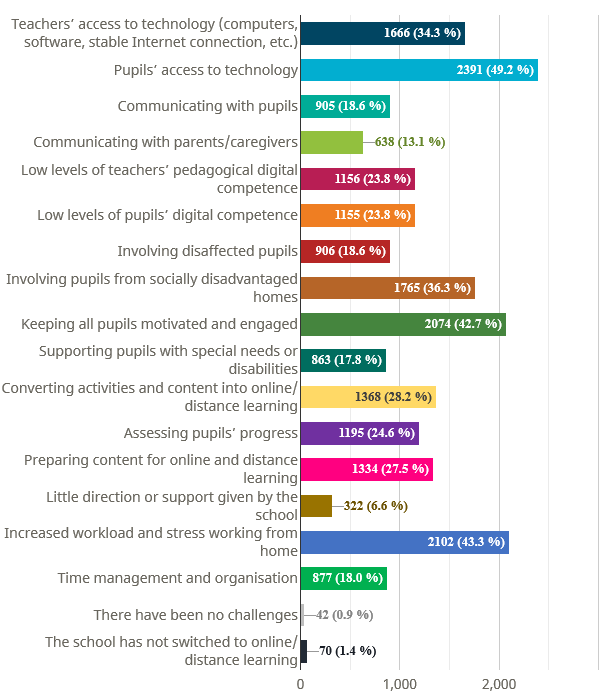Be it teaching or learning, 2020 took the arrangements a notch above with online mode. It was almost an overnight change that teachers and learners had to accept. There were no other alternatives to imparting and receiving education. In the midst of all that, what became the new normal for the majority of us, the problems that arose were somewhat new age too.
Well, of course there were a few general issues and it was all about time that they got fixed. Let us take a look at a few of those:
Lack of the physical presence of a teacher and a classroom
It did affect the learners for sometime as the space of the classroom and the presence of the teacher were reduced to the size of laptop screens. Gradually, the 21st century learners found it easier to handle the new change as they are raised in a technologically incubated environment.
Teachers took time to accept the change
A lot of teachers with a traditional mindset found it difficult to embrace the online platform of teaching. It was not their comfort zone and that resilience made it harder for them to step into the online mode which was seemingly a foreign territory for them. As the necessity was understood, the teachers eventually could manage their insecurities and deliver to the best of their efforts.
Financially disadvantaged learners found it hard to cope with the changing mode of study
That was a serious one and it was given a valid concern. It was gradual; however, the self explanatory online study materials and pre-recorded sessions, televised sessions where teachers conducted input session steadily made it a not-so-impossible task.
Classroom management became a tough deal for teachers
Students now have audio and video controls. In that way, be it any age, learners can mute or stop video as per their convenience. There would be times when it became hard for teachers to maintain decorum and they got under the illusion that if it was an in class session, there would have been a better management. Well, on the flipside, if one carefully looks into the issue, online or offline, if a student is willing to learn, no matter whatever the mode of learning is, the learners would grasp the concepts. Isn’t it?
Now, apart from these ones, there are potential problems which are quite overlooked and not addressed with an effective solution.
 (Ref: https://bit.ly/3aS2Zqk)
(Ref: https://bit.ly/3aS2Zqk)
Online classes tend to get boring
While the online classes have been path breaking in bringing a massive alternative to teach and learn at the comfort of one’s personal space, it also leaves a question: Are the input sessions driven with equal effort just like an in-class scenario? Even when the teacher do not have to take a substantial role in moderating a classroom activity or an input session, the physical presence and the use of study materials, make the whole touch-and-feel element work in the learner’s favour. Online classes tend to have a lot of teacher talk time and a plethora of power point slides that lowers the engagement level of the learners. Now that platforms like the webinar, live online, online, etc are here to stay, teachers should identify this issue from the very beginning and aim at developing dynamic presentations. Use of videos and filler activities to engage the learners can be favourable ideas. Additionally gamification of the concepts should be incorporated. Pecha Kucha presentation styles should be encouraged while a topic is brainstormed or introduced.
Students need to talk
This problem is directly related to the above issue. As the engagement efforts take a downhill due to teachers iterating/reiterating constantly, there is an information overload and even the high order thinkers tend to lose interest. This adversely affects the shy and the intrapersonal learners as well, who require more guidance when it comes to understanding instructions and remembering concepts. Overall, the whole element of building interactions and addressing to the problems and assessing the learners while an ongoing session becomes a real issue. In this case, teachers need to anticipate this problem and be prompt with their communication with each student. Putting them in groups to do tasks, using social media to create polls, invite them on discussions over online forum of the institute, etc. That way the teacher stays connected with the learners, they are assessed as well in this process.
Special learners cannot access certain technological features
This is one potential issue which should be addressed with promptness as well as sensitivity. On campus classes are usually friendly and favourable for differently abled learners. With online classes the barriers are more in terms of mobility, sight and hearing. If the institute allows an inclusive classroom, then using the ASCII text to translate the regular materials for better sensory modality should be designed and shared with those learners.
The potential issues can be more and unknowingly limitless. But for the fact that this is the present day education style, it is all about time and strategic absorption of experience that will upgrade the instructional design for a better future.
Written By : Debalina Chakraborty











